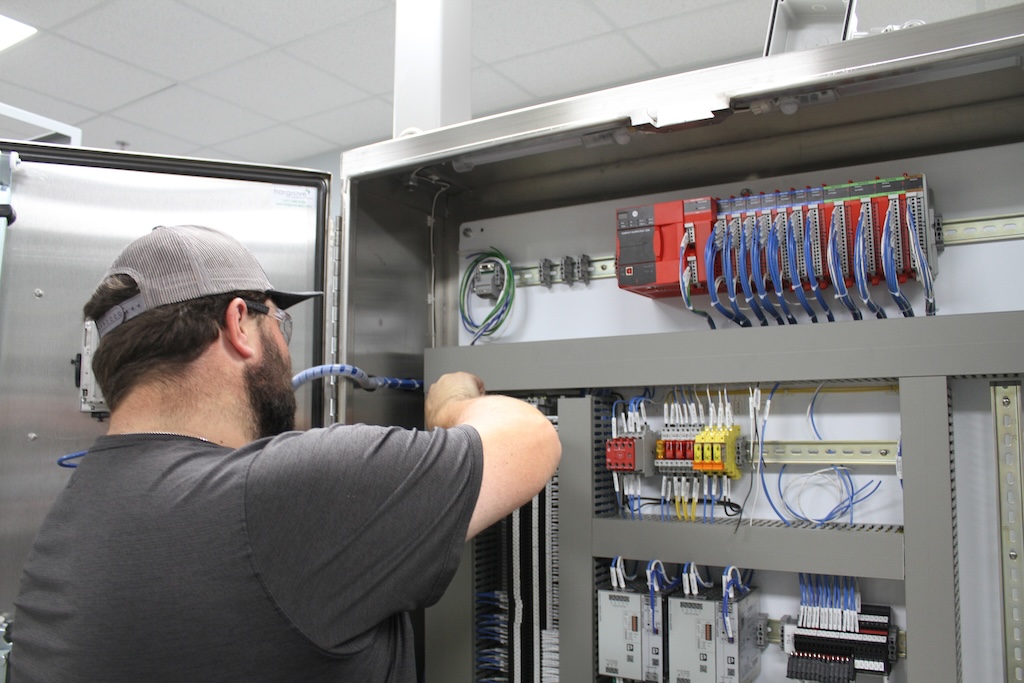How can SCADA solutions provide multi-vendor compatibility, ease of use and streamlined reporting capabilities? This could be a compelling solution for manufacturers seeking both flexibility and efficiency in their control environments instead of a costly DCS implementation.

Managing multiple entertainment system devices — like a TV, sound system or a streaming device such as Roku — is cumbersome when each has its own remote control. A universal remote offers a streamlined solution, enabling users to control all devices from a single interface.
Similarly, manufacturing facilities employing multiple control platforms encounter integration challenges, especially when replacing or upgrading equipment. To maintain operational efficiency, it is essential to ensure that new equipment interfaces work seamlessly with the existing systems. A distributed control system (DCS) can provide a centralized platform for managing diverse systems, thereby enhancing system reliability and improving production quality. However, DCS solutions often entail significant costs, typically ranging from $1,000 to $2,000 per input/output (I/O) point — a substantial investment.
Traditionally, facilities have aimed to standardize under a single vendor to ensure compatibility across systems. But this approach is no longer the only option. Recent advancements in supervisory control and data acquisition (SCADA) technology present a cost-effective alternative for facilities seeking to support a multi-vendor environment from a centralized control interface.
The shift to platform-independent SCADA systems
The primary functions of a SCADA system include centralized data collection and communication, alerting operators and process control.
Platforms such as Inductive Automation’s Ignition, AVEVA Wonderware and Zenon by COPA-DATA offer compatibility with multiple vendors, supporting a controller-agnostic architecture. This approach allows facilities to operate systems composed of various brands within a unified SCADA framework. Consequently, multi-vendor SCADA solutions are gaining traction within the manufacturing sector.
Given the challenges associated with maintaining in-house controls engineers proficient in multiple platforms, a SCADA system’s simplified, user-friendly configuration interface significantly reduces complexity. This accessibility allows operators and engineers to manage processes effectively without requiring expertise across multiple control environments.
Benefits of multi-vendor integration in SCADA
A SCADA solution offers ease of use along with several significant advantages:
- Cost savings: Unlike a costly DCS, a SCADA solution is more financially accessible and cost-effective. A SCADA system can typically be a lower capital expenditure and requires less proprietary hardware, especially when compared to a DCS.
- Unified human-machine interface (HMI) experience: A single interface across multiple systems streamlines operations, providing a more intuitive and user-friendly experience for operators. This also leads to reduced training efforts because operators only need to be familiar with the HMI, rather than multiple different systems controlled by different vendors.
- Preservation of existing infrastructure: With a SCADA solution, facilities can centralize control without a complete system overhaul, allowing them to maintain their existing equipment and control systems.
- Centralized monitoring: SCADA enables monitoring and reporting from a centralized, remote location, enhancing oversight, process visibility and accessibility for management. Enhanced process visibility also allows for quicker response times in case of anomalies, contributing to improved safety and operational efficiency.
Furthermore, SCADA systems are compatible with legacy equipment, allowing facilities with older infrastructure to realize these visibility and efficiency benefits. This adaptability extends the useful life of legacy systems, helping facilities modernize their operations without incurring the cost of full system replacement.
The advantages of web-based and data-driven SCADA capabilities
As a web-based solution and part of a digital transformation strategy, a SCADA system integrates seamlessly with an organization’s ERP system, consolidating data from the plant floor with enterprise-level information. This integration reduces visibility barriers, strengthens analytics capabilities and supports more robust reporting for management. By driving data-driven insights, SCADA empowers organizations to harness the full potential of digital transformation, bridging the gap between operational data and strategic business intelligence.
Additionally, a SCADA system allows personnel, including process operators, to create custom reports and configure HMI options independently, without requiring additional software purchases. This functionality enhances reporting efficiency and contributes to overall operational effectiveness.
Challenges of implementing a platform-independent SCADA
While platform-independent SCADA systems offer numerous advantages, their implementation presents specific challenges, particularly around skills requirements and integration limitations.
Although a SCADA system can facilitate integration across multiple control systems, the facility must retain the requisite programming and technical expertise for each underlying system. Comprehensive training and sufficient resources are essential to ensure effective maintenance and programming of the various control platforms incorporated through the SCADA system. Additionally, resource constraints may restrict the SCADA system’s overall functionality. While the skills demand poses a challenge, SCADA systems can mitigate this issue to some extent by providing a standardized integration layer that streamlines programming across different platforms.
There is, however, a practical limit to the number of control systems a SCADA solution can efficiently support. As the number of integrated systems increases, the resulting technical complexity can hinder setup, maintenance and troubleshooting, impacting overall system manageability.
In addition, it should be noted that SCADA systems may not be as well-suited as DCS for applications involving heavy batch processing, where a DCS may offer superior performance and efficiency.
Implications for traditional DCS vendors
As more manufacturers consider SCADA solutions as a cost-effective alternative to DCS, this shift may introduce competitive pressure and drive innovation among DCS vendors. The cost-effectiveness of SCADA could also prompt DCS providers to adjust their pricing to remain competitive. Ultimately, this trend raises industry standards, resulting in a net benefit for manufacturers.
Best practices for implementing a platform-independent SCADA
Standardization is essential in a multi-vendor SCADA environment, as it enables the system to provide a unified interface to operators, regardless of the diverse vendor equipment in use.
When integrating a new vendor or device into an existing SCADA system, it’s critical to ensure that the equipment can communicate effectively with the SCADA platform, often through protocol conversion. Standardization encompasses tag mapping and protocol harmonization, establishing consistent terminology across platforms. For instance, parameters like setpoint are standardized and mapped to the specific terms used by each vendor’s equipment, thus creating operational uniformity and simplifying the user experience by concealing underlying system complexity.
Effective SCADA implementation further benefits from adhering to International Society of Automation (ISA)-101 high-performance graphics standards, where HMI displays use neutral colors, such as light to dark gray, for routine data, with colors reserved solely for alarms or abnormal readings. This practice minimizes visual distractions, clarifies critical information and aids operators in quickly identifying process deviations.
Comprehensive documentation is another cornerstone of a successful SCADA implementation. It is vital to establish the SCADA system with the operator’s requirements in mind, rather than prioritizing immediate functionality over a well-structured setup. Although this approach requires greater initial effort, it fosters a cohesive SCADA environment. Detailed documentation of standard graphics, alarm hierarchies, tag mappings and other configurations supports future scalability and reduces the need for operators to become familiar with each underlying control system’s intricacies.
To avoid operational downtime, a phased migration approach may be employed. This method involves running the new SCADA platform in parallel with the existing system, gradually integrating it across the facility. Such an approach is feasible as it does not require physical migration of I/O points, allowing original controllers to continue process management and ensuring a seamless transition.

Driving efficiency and ROI in multi-platform environments
In the manufacturing industry, an increasing number of facilities are adopting SCADA systems as a cost-effective alternative to DCS solutions. A well-configured SCADA system allows platform-agnostic operation, consolidating various control platforms within a centralized hub. Implementing a SCADA system can yield significant return on investment (ROI) through reduced capital and operating costs compared to a traditional DCS, as well as enhanced reporting and operational efficiency. The flexibility of this solution provides users with a more intuitive and efficient experience, positioning SCADA as a powerful tool for manufacturers seeking to optimize performance and adapt to evolving industry demands.
Sean J. Phillips, PE, is a senior project manager with Hargrove Controls & Automation. Edited by Sheri Kasprzak, managing editor of automation and controls, WTWH Media, [email protected].
